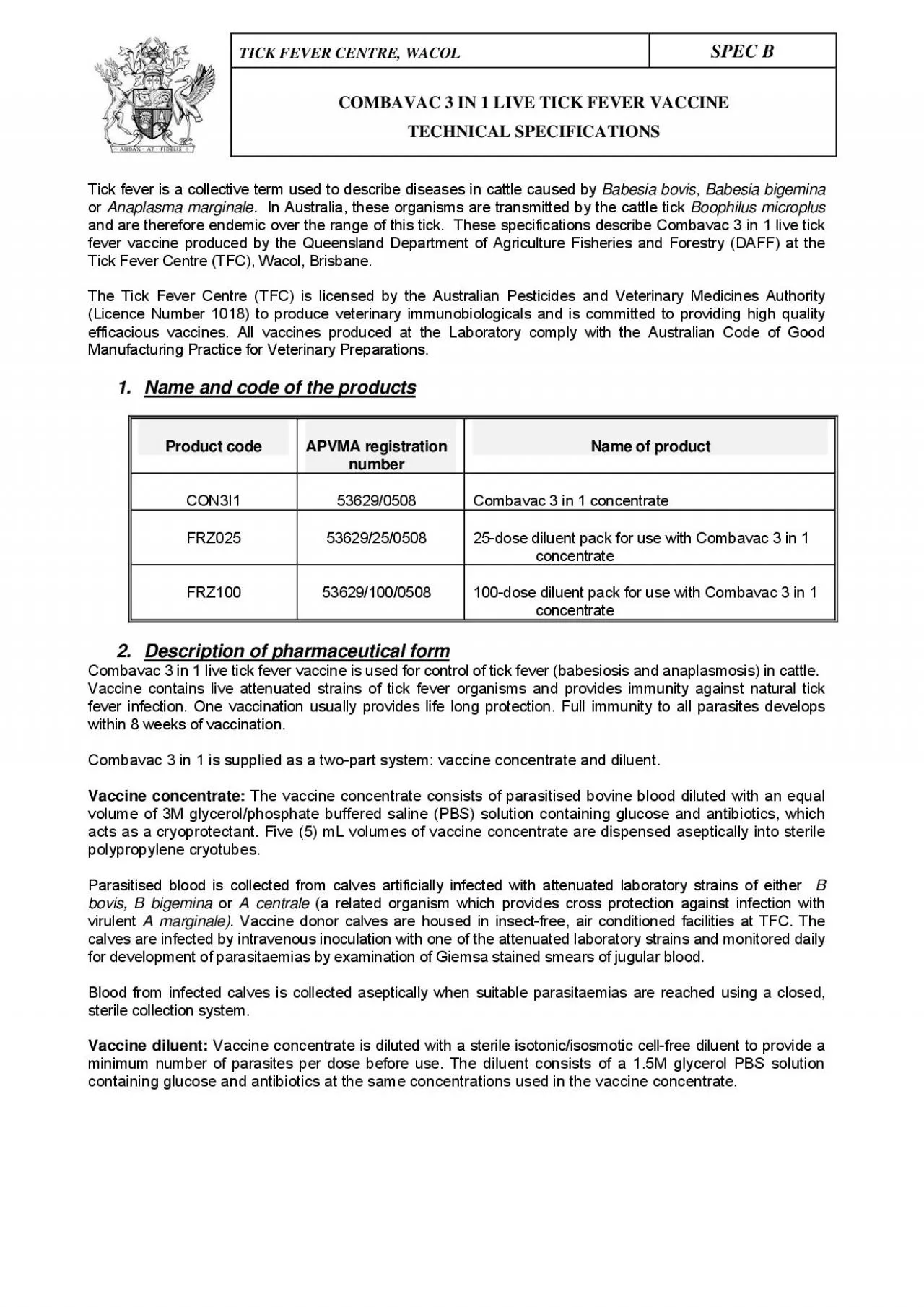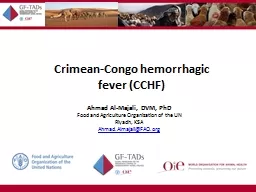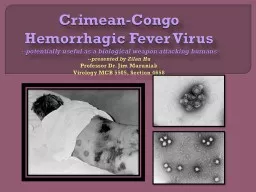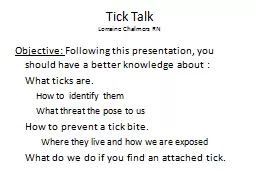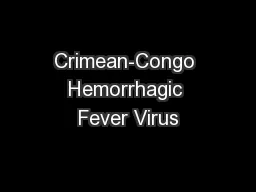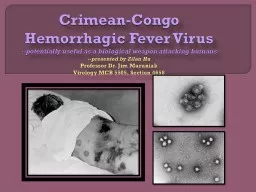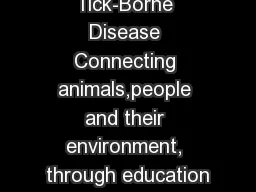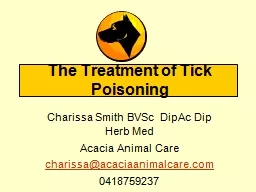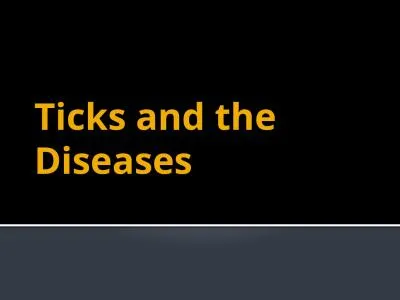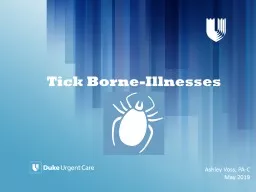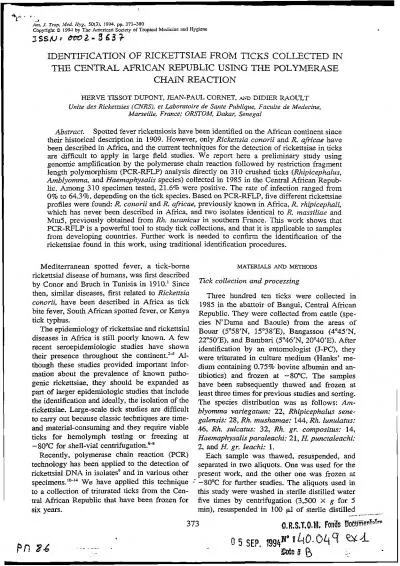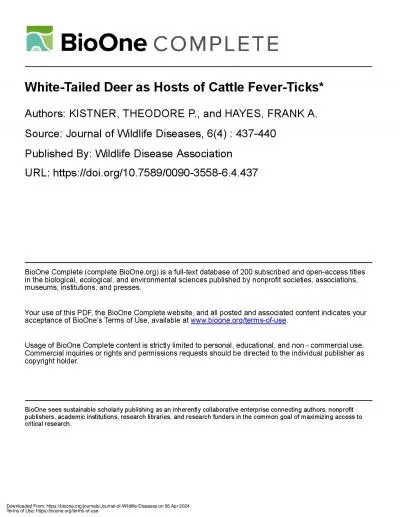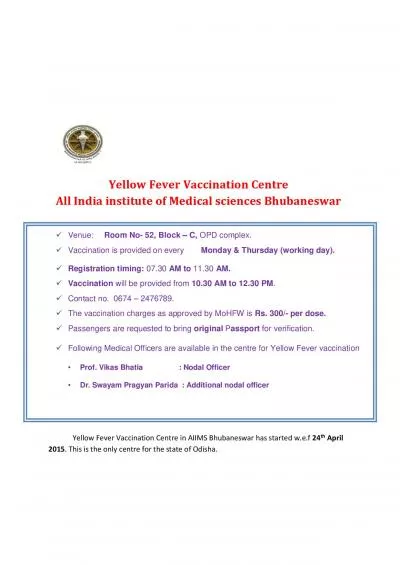PDF-TICK FEVER CENTRE WACOL
Author : ash | Published Date : 2022-09-21
COMBAVAC 3 IN 1 LIVE TICK FEVER VACCINE TECHNICAL SPECIFICATIONS x0000x0000 Tick fever is a collective term used to describe diseases in cattle caused by Babesia
Presentation Embed Code
Download Presentation
Download Presentation The PPT/PDF document "TICK FEVER CENTRE WACOL" is the property of its rightful owner. Permission is granted to download and print the materials on this website for personal, non-commercial use only, and to display it on your personal computer provided you do not modify the materials and that you retain all copyright notices contained in the materials. By downloading content from our website, you accept the terms of this agreement.
TICK FEVER CENTRE WACOL: Transcript
Download Rules Of Document
"TICK FEVER CENTRE WACOL"The content belongs to its owner. You may download and print it for personal use, without modification, and keep all copyright notices. By downloading, you agree to these terms.
Related Documents

